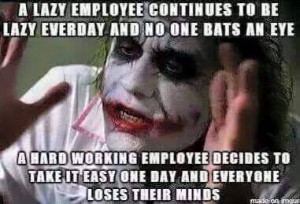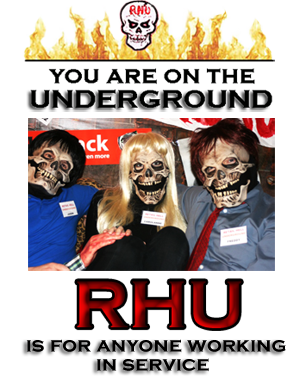A Brief History of Black Friday

The unofficial start of the holiday shopping season is often referred to as the busiest shopping day of the year. But where did this tradition start and just how big is it? Here are the answers to a few frequently asked questions about Black Friday. Hopefully they’ll give you some good talking points next year as you line up outside Best Buy at 4 a.m.
HOW DID BLACK FRIDAY BECOME SUCH A BIG SHOPPING DAY?
It’s hard to say when the day after Thanksgiving turned into a retail behemoth, but it probably dates back to the late 19th century. At that time, store-sponsored Thanksgiving parades were common, and once Santa Claus showed up at the end of the parade, the holiday shopping season had officially started.
In those days, most retailers adhered to an unwritten rule that holiday shopping season didn’t start until after Thanksgiving, so no stores would advertise holiday sales or aggressively court customers until the Friday immediately following the holiday. Thus, when the floodgates opened that Friday, it became a huge deal.
SO RETAILERS WERE ALWAYS HOPING FOR AN EARLY THANKSGIVING?
You bet. They weren’t just hoping, though; they were being proactive about it. In 1939, the Retail Dry Goods Association warned Franklin Roosevelt that if the holiday season wouldn’t begin until after Americans celebrated Thanksgiving on the traditional final Thursday in November, retail sales would go in the tank. Ever the iconoclast, Roosevelt saw an easy solution to this problem: he moved Thanksgiving up by a week. Instead of celebrating the holiday on its traditional day—November 30th that year—Roosevelt declared the next-to-last Thursday in November to be the new Thanksgiving, instantly tacking an extra week onto the shopping season.
BRILLIANT! HOW DID THAT WORK OUT?

Not so well. Roosevelt didn’t make the announcement until late October, and by then most Americans had already made their holiday travel plans. Many rebelled and continued to celebrate Thanksgiving on its “real” date while derisively referring to the impostor holiday as “Franksgiving.” State governments didn’t know which Thanksgiving to observe, so some of them took both days off. In short, it was a bit of a mess.
By 1941, though, the furor had died down, and Congress passed a law that made Thanksgiving the fourth Thursday in November regardless of how it affected the shopping day that would become known as Black Friday.
WHY CALL IT BLACK FRIDAY?
If you ask most people why the day after Thanksgiving is called Black Friday, they’ll explain that the name stems from retailers using the day’s huge receipts as their opportunity to “get in the black” and become profitable for the year. The first recorded uses of the term “Black Friday” are a bit less rosy, though.
According to researchers, the name “Black Friday” dates back to Philadelphia in the mid-1960s. The Friday in question is nestled snugly between Thanksgiving and the traditional Army-Navy football game that’s played in Philadelphia on the following Saturday, so the City of Brotherly Love was always bustling with activity on that day. All of the people were great for retailers, but they were a huge pain for police officers, cab drivers, and anyone who had to negotiate the city’s streets. They started referring to the annual day of commercial bedlam as “Black Friday” to reflect how irritating it was.
SO WHERE DID THE WHOLE “GET IN THE BLACK” STORY ORIGINATE?
Apparently storeowners didn’t love having their biggest shopping day saddled with such a negative moniker, so in the early 1980s someone began floating the accounting angle to put a more positive spin on the big day.
DO RETAILERS REALLY NEED BLACK FRIDAY TO TURN AN ANNUAL PROFIT?
Major retailers don’t; they’re generally profitable—or at least striving for profitability—throughout the entire year. (A company that turned losses for three quarters out of every fiscal year wouldn’t be a big hit with investors.) Some smaller outlets may parlay big holiday season sales into annual profits, though.
IS BLACK FRIDAY REALLY THE BIGGEST SHOPPING DAY OF THE YEAR?
It’s certainly the day of the year in which you’re most likely to be punched while grabbing for the latest Elmo doll, but it might not be the busiest day in terms of gross receipts. According to Snopes.com, Black Friday is generally one of the top six or seven days of the year for stores, but it’s the days immediately before Christmas when procrastinators finally get shopping that stores make the serious loot. Black Friday may, however, be the busiest day of the year in terms of customer traffic.
Snopes’ data shows the ten-year span from 1993 to 2002, and in that interval Black Friday was never higher than fourth on the list of the year’s busiest shopping days by sales volume. In 2003 and 2005 Black Friday did climb to the top of the pile for sales revenue days, but it still gets stiff competition from the week leading up to Christmas, particularly the Saturday right before the big day.
DO PEOPLE REALLY GET INJURED ON BLACK FRIDAY?
Sadly, yes. The most tragic Black Friday incident happened in 2008, when 34-year-old seasonal employee Jdimytai Damour died from asphyxiation after 2,000 shoppers knocked him own and stampeded over his back after the doors opened at 5 a.m. at the Wal-Mart on Long Island, New York.
In 2010, nine people in a California shopping mall were injured, including an elderly woman who had to be taken to the hospital, after a rugby-style scrum erupted when gift certificates were dropped from the ceiling.
In Buffalo, New York, several more shoppers were trampled trying to get into a Target. One of the victims, Keith Krantz, who was pinned against a metal door support and then shoved to the ground, told a CNN affiliate he thought he would be killed. “At that moment, I was thinking I don’t want to die here on the ground,” Krantz said.
In Murray, Utah, 15,000 shoppers swamped a mall with such force, the local police had to respond to break up skirmishes and fist fights, and keep shoppers from ransacking stores. Down in Boynton Beach, Florida, a man in a crowd of eager shoppers waiting for a Wal-Mart to open was found carrying a handgun, two knives and a pepper spray grenade.
In 2008, a fight broke out between a young girl and a man at another Wal-Mart store in Columbus, Ohio, over a 40-inch Samsung flat-screen television. It was $798, marked down from $1,000. The New York Times reported that the not-so-aptly-named Nikki Nicely, 19, leaped onto a fellow shopper’s back and began pounding his shoulders violently when he attempted to purchase the television. “That’s my TV!” shouted Ms. Nicely, who then took an elbow to the face. “That’s my TV!” The fight was broken up by a police officer and security guard. “That’s right,” Nicely cried as her adversary walked away. “This here is my TV!”
That same year, inside a Toys R Us in Palm Desert, California, two women erupted into a dispute and began punching each other in the face until their friends—unluckily, both men with handguns—entered the fray.
The men chased each other through the toy store, careened around Christmas decorations and half-price electronics, and eventually shot each other to death by the cash register.
(Toys R Us later released a statement saying that although the shoppers’ deaths arose as a result of a dispute, which broke out in an aisle of Toys R Us on Black Friday, it would be “inaccurate to associate the events of today with Black Friday.”)
Two years after that incident, a 21-year-old woman who’d been waiting outside another Toys R Us store in Madison, Wisconsin, freaked out, cut in line, and pulled a gun on her fellow shoppers.
HOW CAN THIS KIND OF THING BE AVOIDED?
In an effort to keep a few would-be clients from personal injury law firms, the Occupational Safety and Health Administration (OSHA) released a special checklist for retailers expecting large crowds.
So what’s OSHA’s advice? Consider using bullhorns. Hire a team of police officers. Be prepared for “crowd crushing” and “violent acts.” Set up barricades. And, above all else, when the charging shoppers come a’runnin’, stay out of the way.
Haley Sweetland Edwards contributed to this story, portions of which originally appeared in 2009.
Sourced from mentalfloss.com

























Recent Comments